-
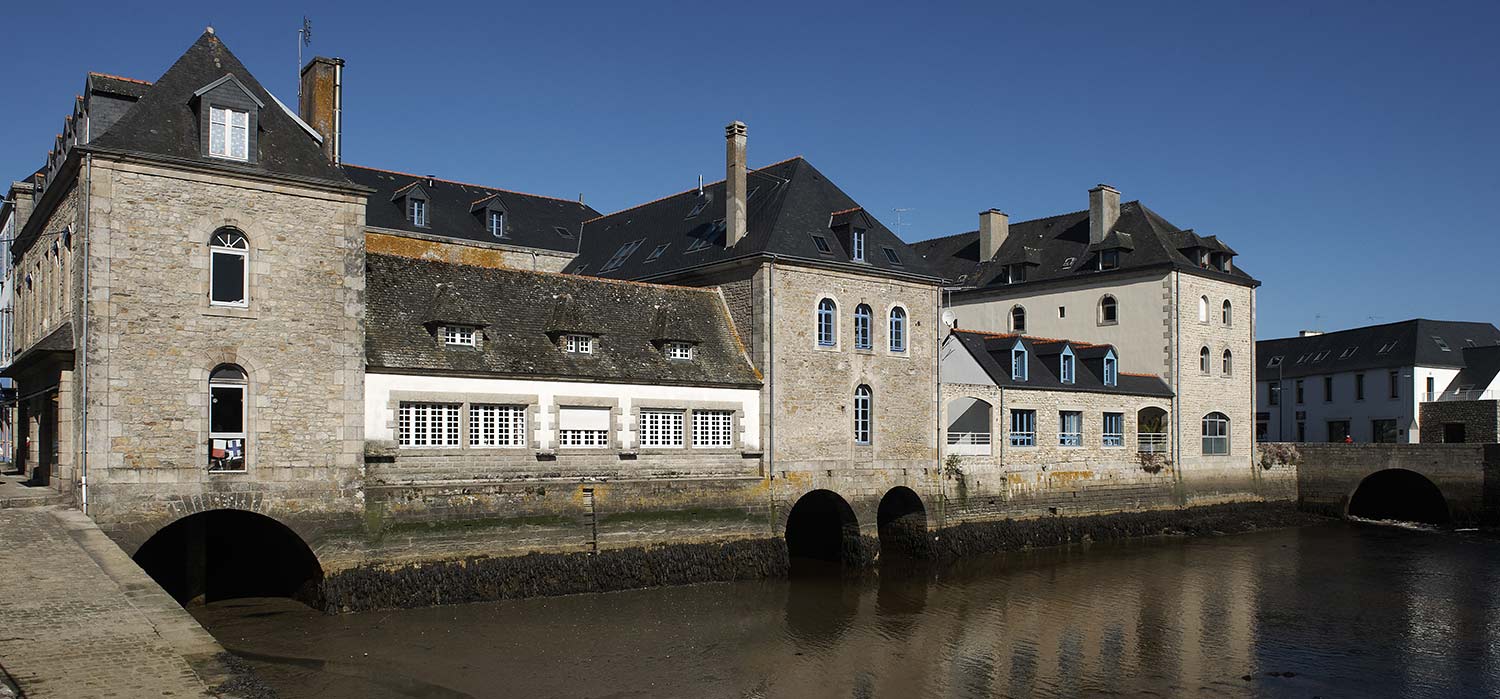
-
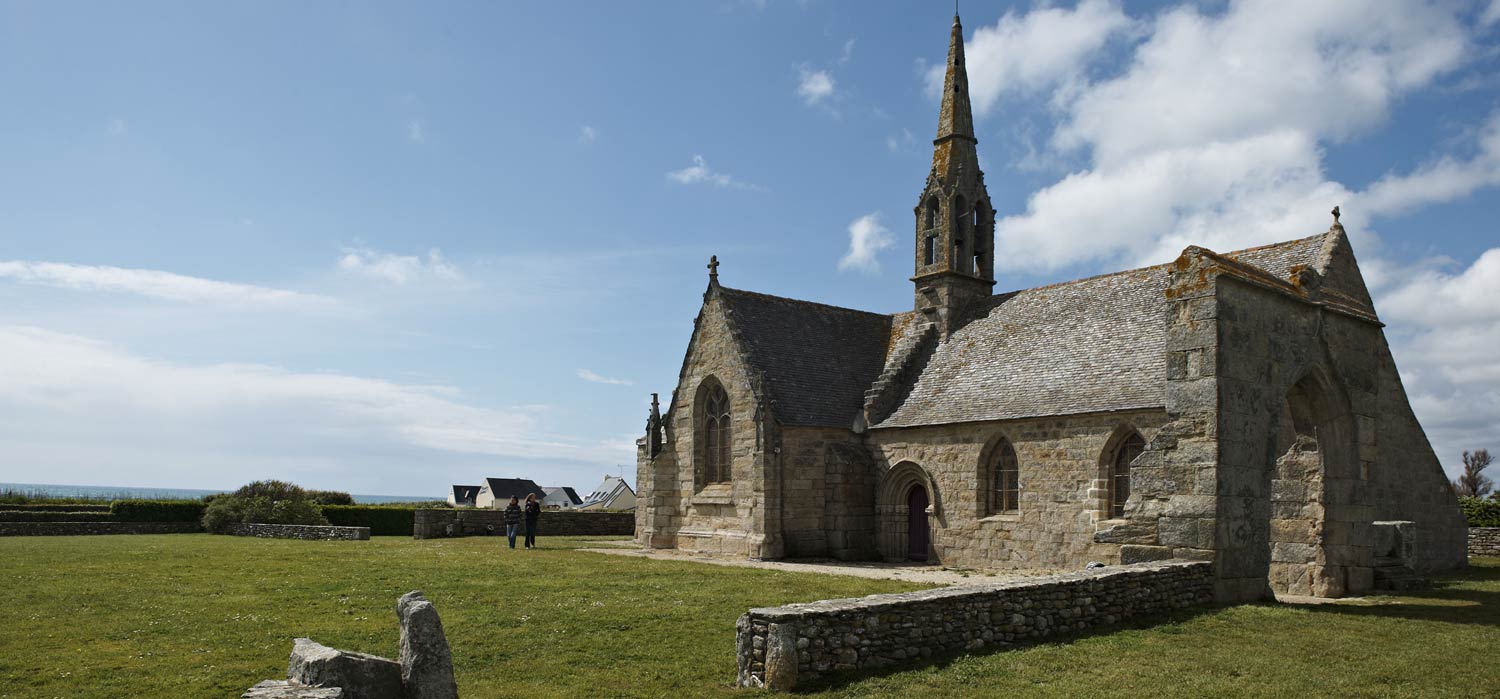 LE PAYS
LE PAYS
BIGOUDEN
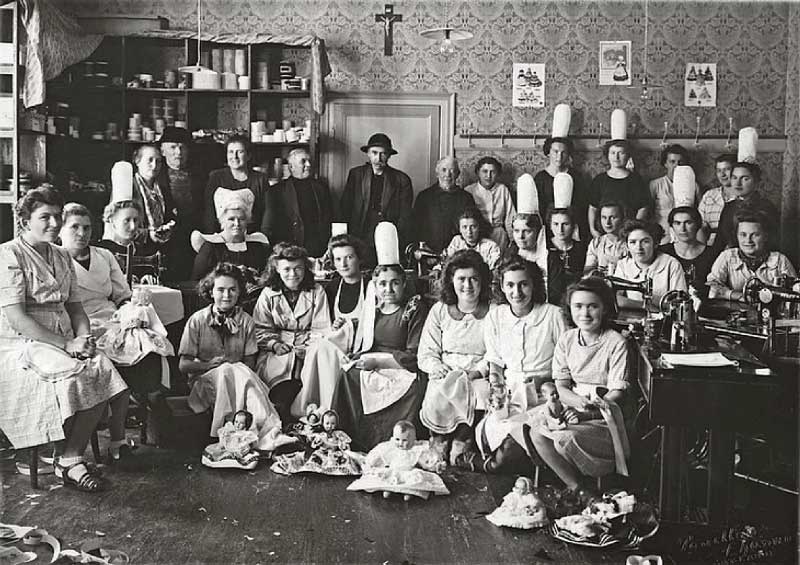
THE MAISON LE MINOR
The Maison Le Minor was founded by Marie-Anne Le Minor in 1936.
The idea came to her, almost as a child’s dream, to produce a collection of "Dolls of Brittany". For her first creation, she was inspired by the richly-adorned Breton costumes and the truly unique local embroidery tradition. These hand-crafted dolls soon became real collectibles.
Having admired the exceptional work of local embroiderers in the Pays Bigouden she realised however that the costumes were less and less worn by the population and regarded mostly as folk costumes. She then had the brilliant intuition to transpose this very particular art of embroidery to other artistic productions.
From that period dates her encounter with the world of art and she started collaborating with renowned artists such as painter Mathurin Méheut, author Colette and designer Pierre Toulhoat on her productions of tapestries, scarves and later printed tablecloths.
Meanwhile,the success of the Breton dolls was both spectacular and international. Up to 300,000 units were produced by the end of the 1960s, but the popularity of dolls finally run out of steam in the following decade. At the same time, the Maison Le Minor drew on the local repertoire to develop its clothing lines with Kabigs, (a particular type of duffle coats) initially workwear, which also had a spectacular diffusion in the 1970s.
At that time, Le Minor employed more than 400 people, and subcontracted part of its productions and embroidery workshops to major Parisian fashion houses such as Courrèges. At the end of the 1970s, the oil crisis and the change in taste saw the abandonment of the clothing branch.
The Maison Le Minor refocused on its core business of embroidery and the production of household linen at the boutique-workshop in Pont-l’Abbé, where it continues to perpetuate its exemplary know-how.
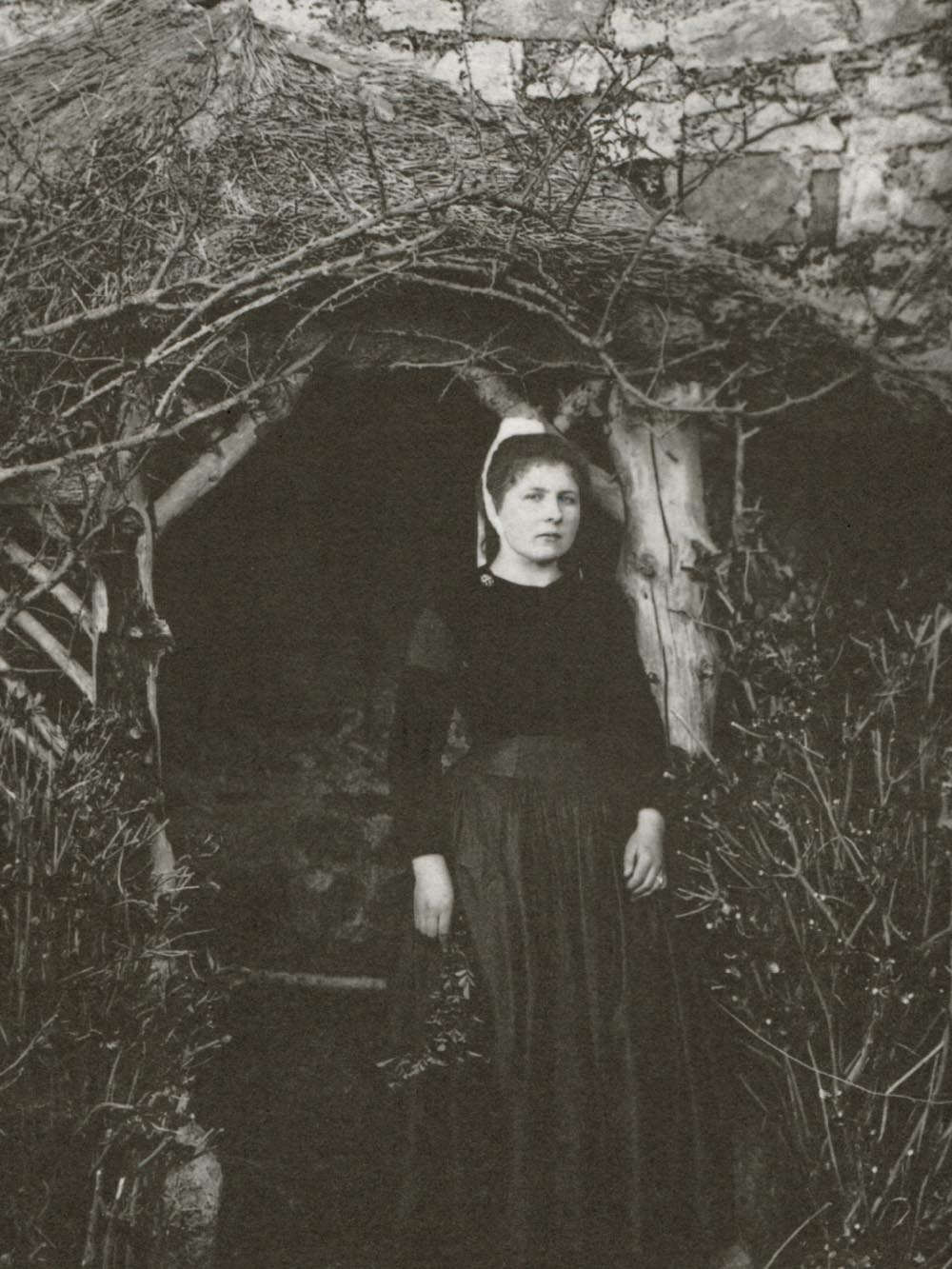
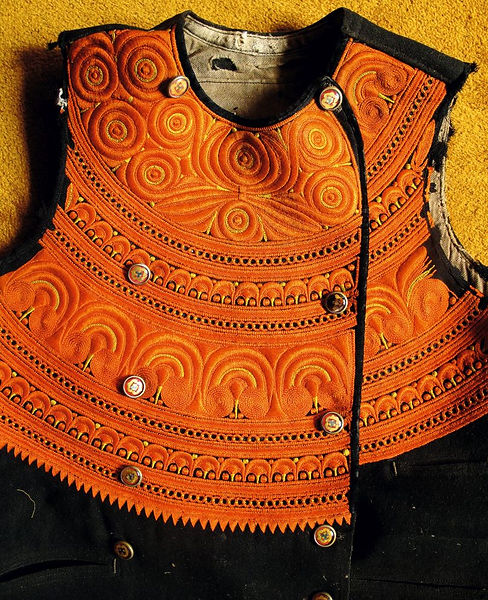
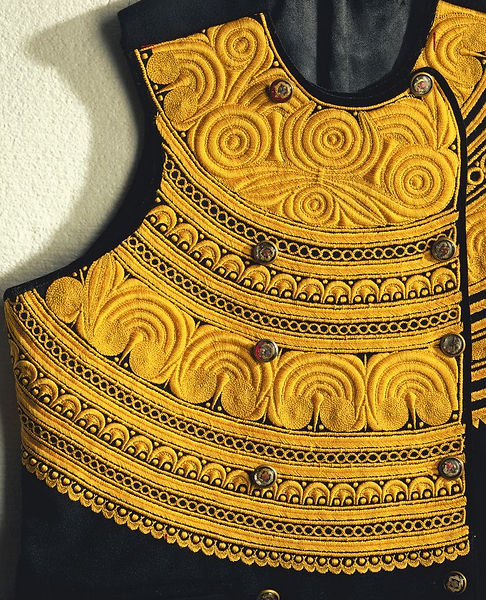
Having noted that the Breton and Bigouden costume was worn increasingly rarely in the region, Marie-Anne Le Minor became concerned for the future of the distinctive and precious art of Breton embroidery. She recruited a distinguished embroiderer so as to perpetuate the tradition and offer embroidered articles for sale. In Brittany, embroidery was in fact the preserve of men, who would travel from village to village and embroider waist-coats, jackets and costumes for their clients.
It should be borne in mind that the costumes of the Bigouden region were at the time richly and exquisitely embroidered, and indeed figured in the paintings and in particular those of artists belonging to the School of Pont Aven such as Paul Gauguin (1848-1903), Paul Sérusier (1864-1927), Emile Bernard (1868-1941)et Maurice Denis (1870-1943). Artists belonging to the following generation, such as Mathurin Méheut (1882-1958), Lucien Simon (1861-1945), Jean-Julien Lemordant (1878-1968), also found inspiration in the Bigouden region.





With an abundant female work-force at hand in the region, Marie-Anne Le Minor decided to create jobs in a work-shop devoted to the creation of dolls' clothes. Before long she was employing twenty people, and the fast-growing renown of LE MINOR dolls led her to the 1937 Exposition Universelle in Paris.
The writer Colette (1873-1954) of the Académie Goncourt, who became a close friend, composed the catalogues for the Maison LE MINOR, writing that Anne-Marie had become the "Great fashion designer for regional dolls".

This branch of her activity was hugely successful and the regional dolls with their embroidered costumes began to travel widely throughout France, and before long throughout the world, as collection pieces for such famous names as Colette, Général Eisenhower, Caroline Kennedy, prince Rainier de Monaco. Japan soon became one of the Maison LE MINOR's most important markets, with such notable clients as Daimaru (Osaka), Fujita & Co Ltd (Tokyo), Mitsukoshi, Yamanaka Shoji, Sunray International Inc. (Kobe).
During World War II, there was a shortage of the celluloid required for the making of the bodies of the dolls, and the Maison LE MINOR underwent its first re-adaptation, converting back to embroidery - the heritage of the Bigouden region - producing hand-embroidered table linen, carpets, religious garments, folklore costumes and bags. The first articles to be produced were therefore embroidered linen and costumes, and printed linen.
In 1957, inspired by the garments worn by the nineteenth-century sea-weed gatherers - the goémoniers - LE MINOR adapted the wool cloth to the creation of a new fashion, that of the Kabig, and the craze in the 1970s for this piece of clothing was to become one of the flagship items of the LE MINOR firm.
Alongside this new expansion, Marie-Anne Le Minor endeavoured to develop and bring up to date a popular art-form rich in tradition, by calling on artists of the region, thus creating a unique range of table-linen, either printed or embroidered (by hand or with a hand-guided machine, the Cornely), highlighting the artists' and artisans' designs.
From the very foundation of the firm, Marie-Anne surrounded herself with artists of great renown. Thus it came about that Mathurin Méheut - whom she met while he was painting the fishermen and inhabitants of the Finistère - created for her the design of the ermine LE MINOR, a design which still graces the boxes and wrappings of our articles.
Many ageless designs, more than eighty years on, are still on the books of LEMINOR, such as for instance Mathurin Méheut's celebrated tablecloth design known as The Sea, which has been in uninterrupted production since 1942. The table-ware that accompanied it, created by the Faïencerie Henriot of which Méheut was the artistic director, can still be seen and admired in the Musée de la Faïence in Quimper. A native of Lamballe, Méheut lived principally in Paris when he was not travelling, and was acquainted with a great number of artists whom he presented to Marie-Anne when she was staying in Paris. This is how she met the writer Colette, with whom she formed a close friendship.
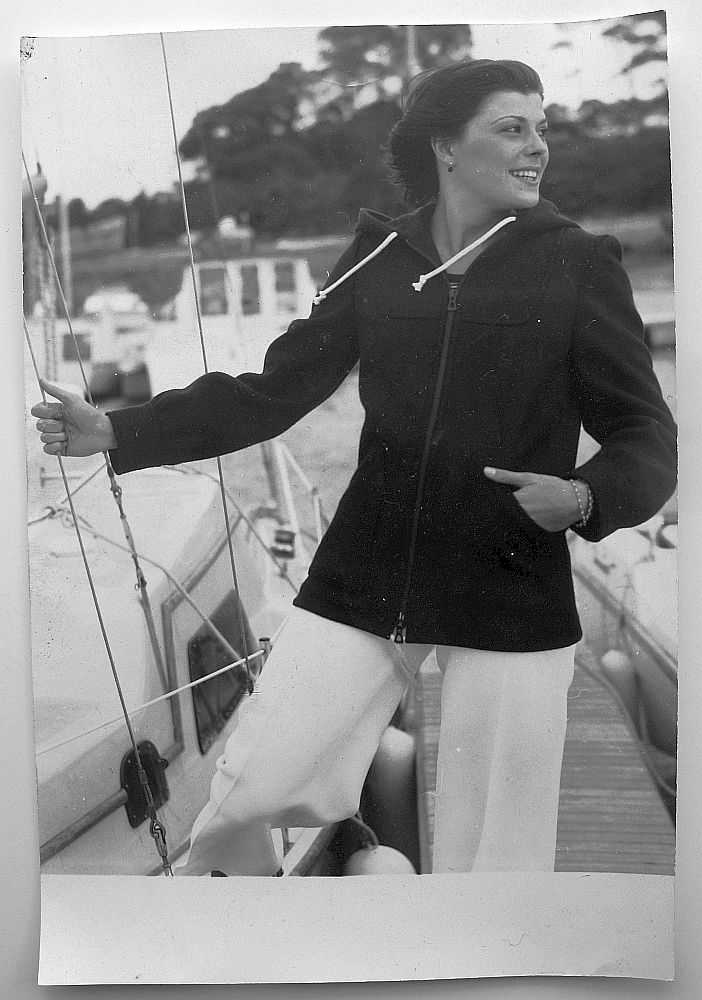
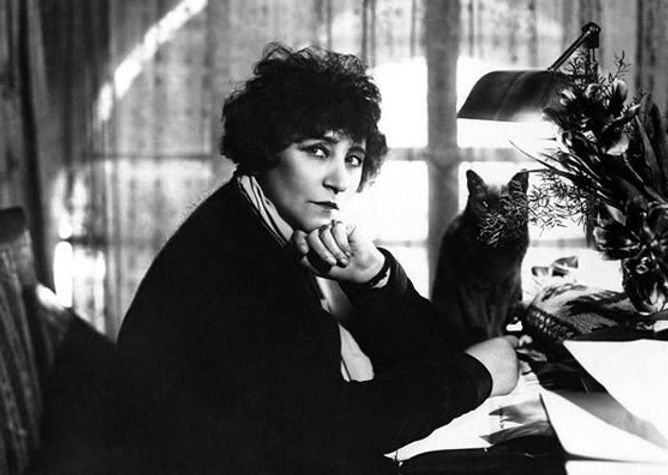
Colette admired Marie-Anne Le Minor's creative energy, her boundless dynamism and her incredible spirit of enterprise. Health problems intervened and prevented Colette writing the book that Marie-Anne had commissioned from her on the art of embroidery but, on the other hand, she did write, and with her customary verve, a superb catalogue of the LE MINOR dolls with their dazzling embroidered costumes.
LE MINOR dolls proved to be such a success that they were sold in the Magasin Blancs in Paris and at Orly airport. In the 1960s, Air France even offered them to first class passengers.
Colette à sa table de travail au Palais Royal
As for the book entitled Broderies de Bretagne , it was published by Editions Le Minor in 1946, illustrated by Mathurin Méheut and its text was written by the writer Jean de la Varende (1887-1959). It was born from the will of Marie-Anne Le Minor who has collected decades of Breton costumes with exquisite colorful embroidery.
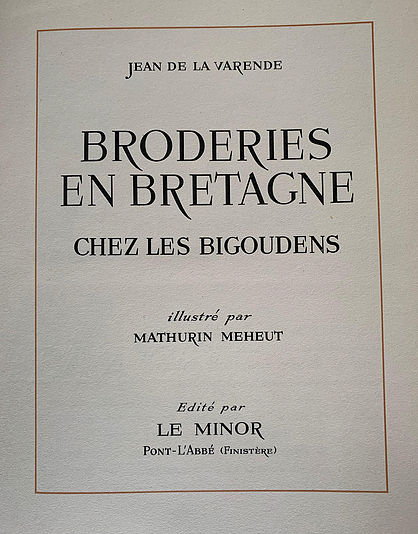

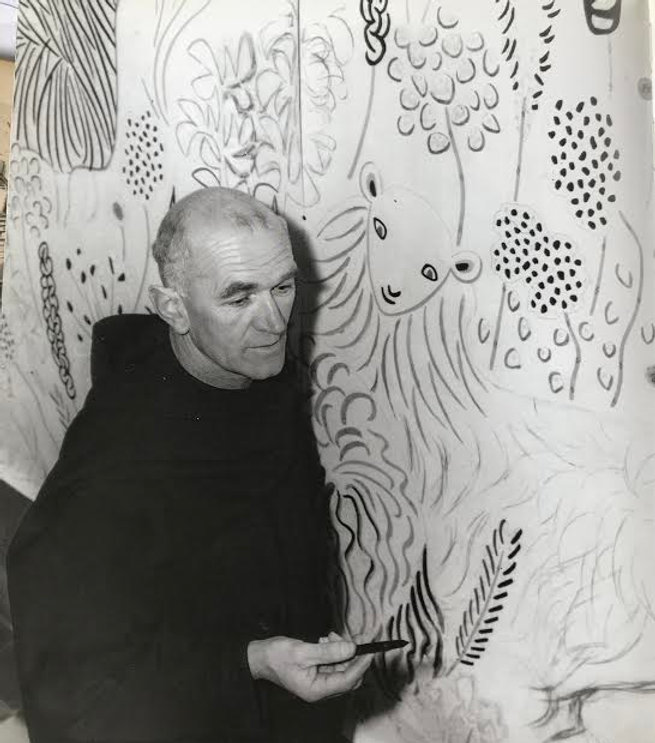
Dom Robert
Another encounter led to the creation of another wing of production for LE MINOR. When on his way to the Abbey of Landevennec, Dom Robert (the artist-monk) met Marie-Anne Le Minor. She was already an admirer of his tapestry-designs which were then woven by the Manufacture d'Aubusson. She asked for his permission to have them embroidered at Pont-l'Abbé, an offer which he politely declined. Marie-Anne was dissatisfied with this outcome, and she decided to ask one of her staff to embroider one of Dom Robert's designs from a postcard.
She sent the artist the completed work. Moved by her determination, and even more by the result which imbued his design which such strength and relief, he finally agreed to allow the Maison LE MINOR to produce embroidered versions of all his cartoons. His embroidered tapestries are still created on-site in our Pont-L'Abbé workshops.
The tapestries and the embroidered and printed table-linen were becoming a reference [point] for Brittany's heritage. For many lovers of art and culture, a visit to Le Minor is a sacred rendez-vous of the holidays. / This was the case for instance for Georges and Claude Pompidou who, as neighbours, were both clients and devotees.
Pierre Toulhoat (1923-2014), the immensely talented Breton artist, also created for LE MINOR a large number of cartoons for embroidered tapestries and a wealth of drawings and sketches for house-linen, printed and embroidered, as well as a collection of jewellery in gold and silver inspired by the landscape and legends of Brittany.
Thus, over the years, the Maison LE MINOR has enriched its collection of pencil preparatory drawings, gouaches, patterns of all sizes.
Marie-Anne's sons, Jacques and Jean Le Minor, followed by her grand-son Gildas, continued unceasingly, and with the same creative energy and talent of their respective mother and grand-mother, putting the emphasis on the exceptional savoir-faire and the tradition of quality and openness which were always the trade-mark of the Maison LE MINOR. Jacques and Jean developed the embroidered tapestry side of the business, and Gildas that of religious banners.
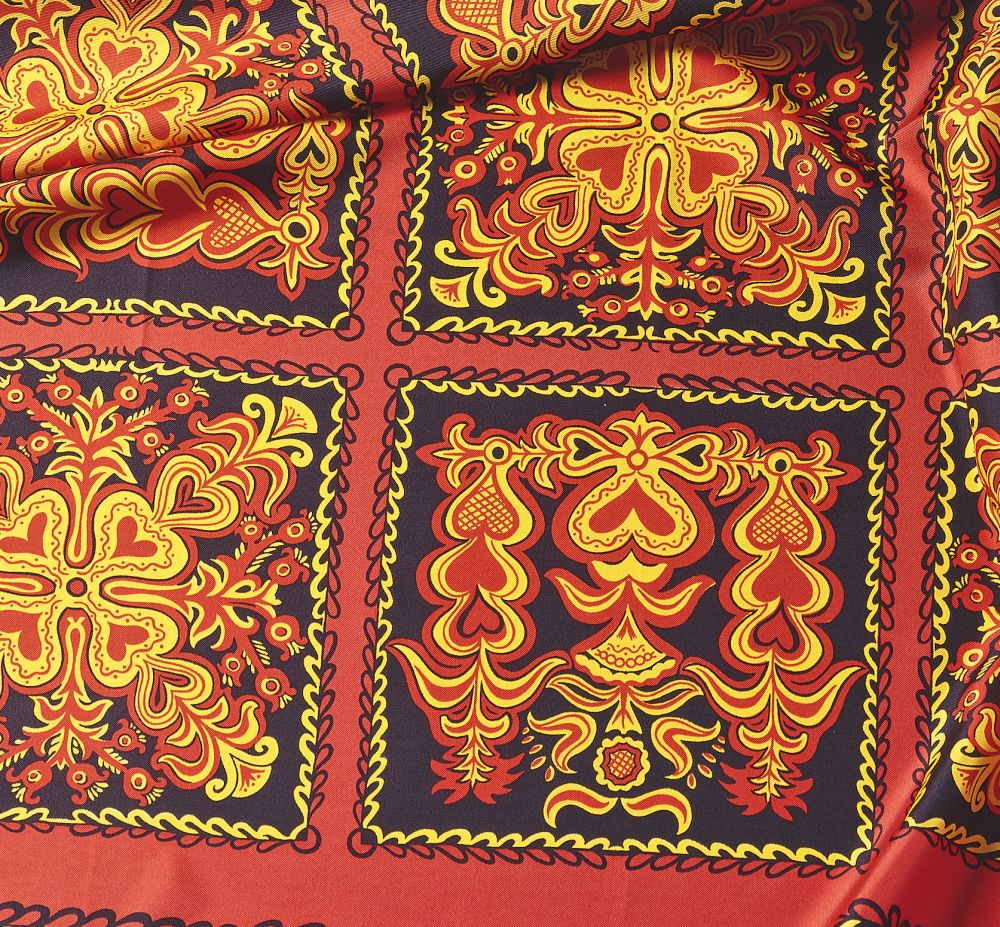
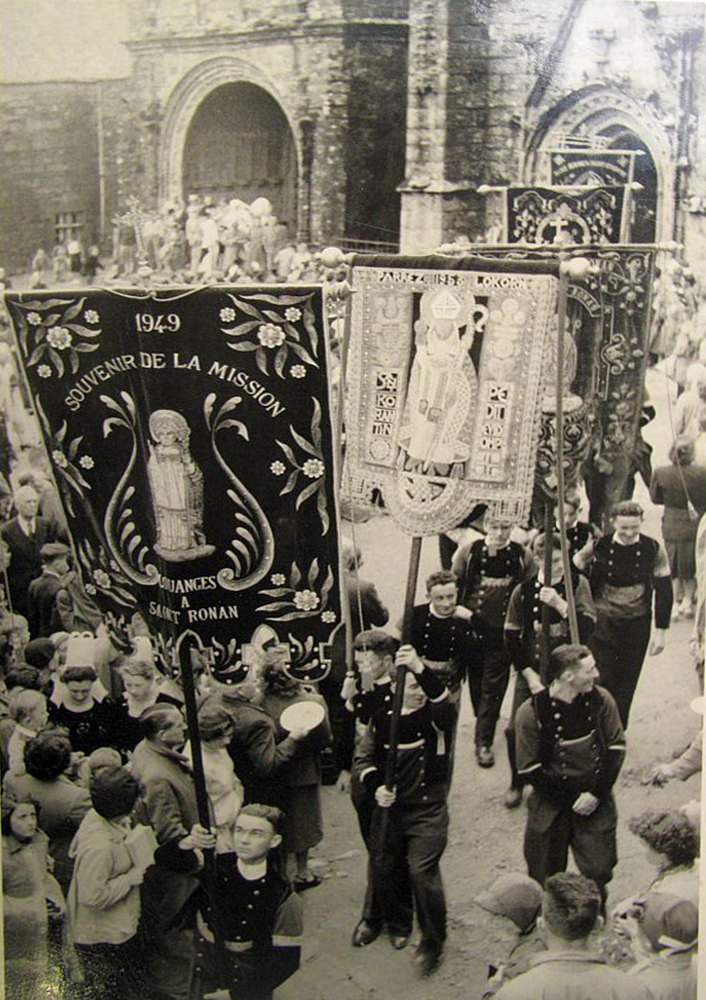
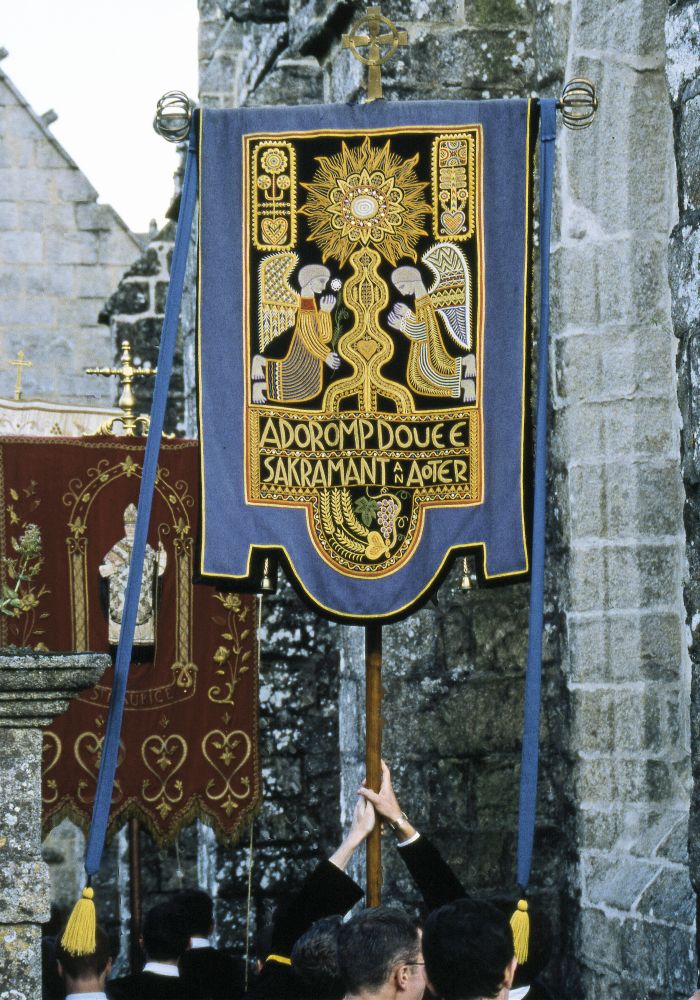
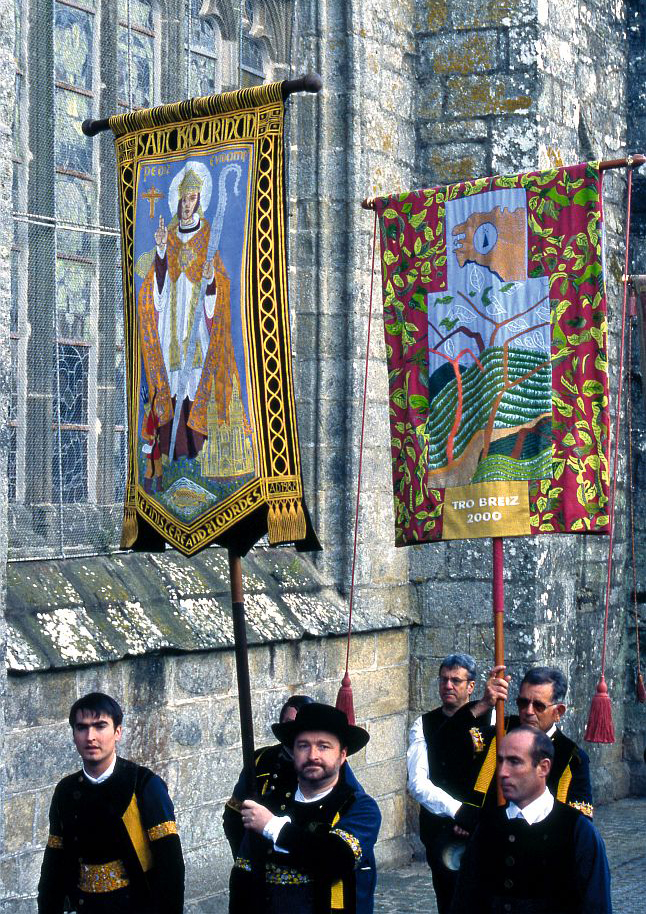
From these works still derive many LE MINOR contemporary creations, and it is these which give them their distinctive character, at one and the same time profoundly anchored in the Bigouden region, and more broadly in Brittany, yet with a timeless and universal appeal. The artistic heritage and tradition of LE MINOR lives on, and we are proud of the fruitful collaborations we are developing with talented contemporary artists both from Brittany and beyond.
1936 : Marie-Anne LE MINOR launches her doll workshop.
1937 : Marie-Anne LE MINOR presents her dolls on the Brittany booth at the Universal Exhibition in Paris.
1940 : temporary cessation of doll production and reconversion to the manufacture of hand-embroidered table linens, folk costumes and priestly clothing.
1945 : this year Marie-Anne LE MINOR becomes acquainted with the writer COLETTE, a friendship which will last ten years, until the death of the writer.
1947 : edition of two books on embroidery with illustrations entrusted to Mathurin MEHEUT. "Embroidery in Brittany", text by Jean de la Varende, and "Brodeurs, Brodeuses in the Pays Bigouden", text by Auguste DUPOUY.
1948 : 1st LE MINOR scarves arrive on the market. The PENMARC'H model after a drawing by Pierre TOULHOAT.
1950 : new start with the second generation, Jean and Jacques LE MINOR. Inspired by the advice of Yves Marie CRESTON, from the clothing of 19th century seaweed harvesters, LE MINOR uses felted wool for a new style, that of the "Kabig".
1953 : creation of the first religious procession banner . It was designed by Pierre TOULHOAT and its first release was for Locronan's Grande Troménie.
1963 : the largest tapestry ever made at LE MINOR, embroidered by Thérèse Narzul , signed Jean Chauffrey is at the Faculty of Sciences in Brest.
1966 : Marie-Anne LE MINOR ceases to manage the family business but faithfully continues in her role of adviser.
1968 : realization of the first tapestry embroidered after a design by Dom ROBERT , artist renowned worldwide for these tapestries made in Aubusson with the technique known as "low smooth". This work with Dom Robert will pave the way to Pont-l'Abbé to other renowned cardboard makers in Aubusson, such as Jean PICART LE DOUX, Simon CHAYE, François LESOURT.
1970 : the 70s were the flagship years of LE MINOR. Thanks to the success of the "Kabig", the company then had almost 500 people, compared to 30 in 1937 and 200 in the 1960s.
1982 : is the final cessation of the manufacture of dolls and the sale of the clothing branch to the company MBL in Guidel.
1987 : the second generation retires, and Gildas LE MINOR now leads to the destinies of the House LE MINOR.
1994 : Maison LE MINOR becomes a creative member of the "Creation in Brittany" business club.
2000 : realization, according to a drawing by Jean RENAULT, of the banner of TRO BREIZ , famous Breton pilgrimage which links each year one Breton bishopric to another, to thus make the tour of Brittany in 7 years.
2005 : "Creation in Brittany" merges with Product in Brittany, a powerful association which brings together 420 companies and 110,000 employees who are committed to the economic and cultural development of Brittany.
2007 : 1st prize for the " PRIZE OF CREATION " competition organized by Product in Brittany with the " BRODERIE 29 " project by Gwen Le Gac.
2009 : Exhibition in Paris at the Maison de la Bretagne of photos of Jacques BOSSER featuring old hats and LE MINOR banners.
2011 : October 20 the mayor of Pont-l'Abbé inaugurates the newly-named M.A. LE MINOR street.
2012 : launch of the book LE MINOR with COOP BREIZH editions, text by Armel MORGANT. This book which has no other ambition than to retrace the long and very rich history of a house which marked the history of Brittany.
2014 : in July on the occasion of the 20th anniversary of the magazine COTE OUEST , the latter featured a beautiful article on the House LE MINOR.
2014 : in December, Exhibition organized by the Friends of the Bigouden Museum "DANS LES PAS DE DOM ROBERT". Visitors were able to admire the creations from Dom ROBERT's designs, both in LE MINOR embroidery and Aubusson tapestries.
2015 : A Bigouden banner for the Bretons of ROME. Maison LE MINOR has just completed the creation of the banner for the SAINT YVES DES BRETONS church in ROME.
2017 : For the third consecutive year, two famous businesses, part of the heritage of the Pays Bigouden, have joined forces to create a unique collection of fêves. Maison LE MINOR and bakery STRUILLOU LE CLEACH have produced fêves with LE MINOR dolls.
2018 : delivery of the first banner embroidered by Apolline DUBOSCQ , the most recent hand-embroiderer from Maison LE MINOR. This banner is intended for the Saint FELIX parish of Nantes.
